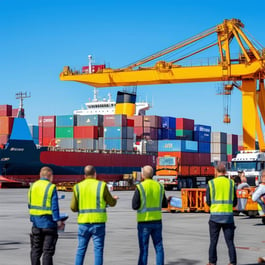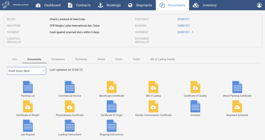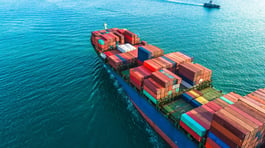“We have management systems. Transportation Management. Global Trade Management. Resource Management. What we don’t have is an execution system.” - VP, Global Logistics of a Top 5 US Exporter
Based upon what we're hearing through our relationships with 40+ of the Top 100 US Exporters (as ranked by JOC.com), the quote above explains the current state of global trade today perfectly. Moving goods across the world grows increasingly complex on a daily basis; and current technology solutions are not designed to help navigate this - today or for the future.
Although trade execution is well known by practitioners, there isn’t a well-established and/or industry standard definition of term. After having called and talked to over 3,000+ professionals throughout the supply chain, interviewed 500+ global trade professionals by phone and spent 100+ days (1,000+ hours) sitting onsite with trade execution teams - here’s what they’ve told us:
Trade Execution: After a legally binding agreement of a trade (i.e., contract/order) between a buyer and a seller, trade execution is all of the steps leading up to the payment (i.e. settlement) of the transaction. The purpose of trade execution is to reduce the cost, settlement risk and operational risk of clearing and settling multiple transactions among multiple parties.
Global trade is a world of exceptions. On a typical day, trade execution team members are handling multiple shipments at a time, with an average of 40-50 tasks per shipment. Each task represents a risk of not executing a shipment on time - that’s 400 tasks+ (i.e. - risks) per week. Based on sitting down with trade execution teams, we’ve identified that around ninety percent (90%) of these tasks are transactional (data entry, proofing, etc). By automating these tasks, execution teams free up their time to focus on the 10% of exceptions that add strategic value for their customers.
“He or she who can deliver my product on time is going to win my business. It is really important to us, as a sourcing and supply business, to find ways to improve that execution.” - Traci Hamilton, International Paper
Source: Ag shippers say customer service ‘dying art form’
In this new era of trade, differentiating on strategic, value-added customer service is the key to creating a competitive advantage. Teams that delight their customers with a seamless buyer experience (quality documentation + visibility + on-time delivery), receive executive level praise from those customers (and larger share of wallet). Moreover, companies with superior customer experience enjoy reductions of 10 to 20 percent in cost to serve, revenue growth of 10 to 15 percent, and an increase in employee satisfaction (Source: McKinsey, Improving the business-to-business customer experience).
If trade execution teams are spending 90% of their day on transactional tasks, how are they able to perform strategic projects that differentiate from competitors?
This is why ERP systems (like SAP/Oracle), CTRM systems, Global Trade Management (GTM) systems, and Transportation Management Systems (TMS) fall short today - they are not designed to meet the challenges of modern trade execution.
“A complex system that works is invariably found to have evolved from a simple system that worked. A complex system designed from scratch never works and cannot be patched up to make it work. You have to start over with a working simple system.” - John Gall
Source: Systemantics: How Systems Work and Especially How They Fail
The complexity and scale of modern trade requires a “new way”. A personalized, e-commerce customer experience powered by machine intelligence and process automation. That new way is the TradeLanes way.
Want to learn more about the "new way"? Please reach out to us at hello@tradelanes.co for a discussion or demo.





Leave a Comment